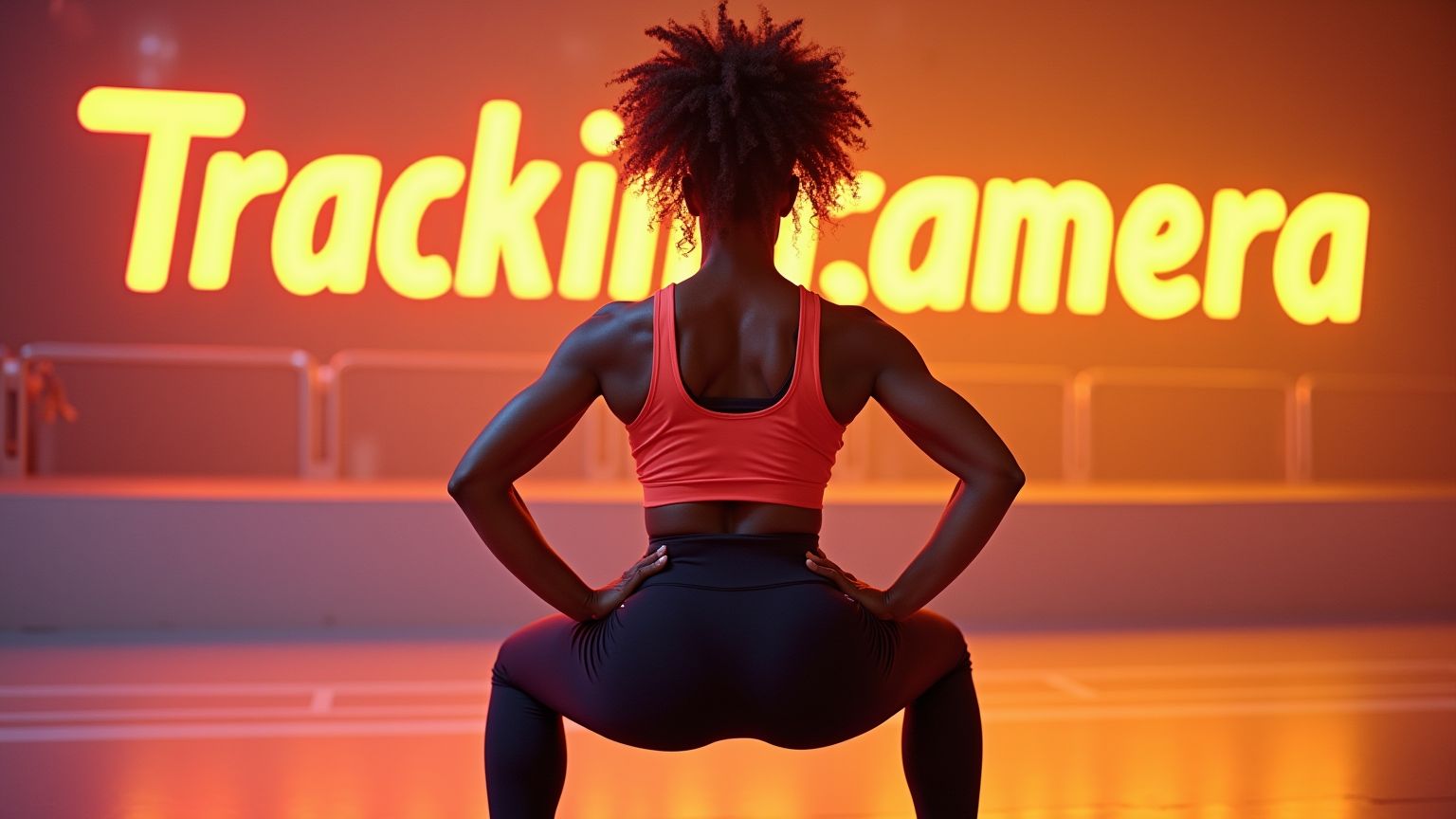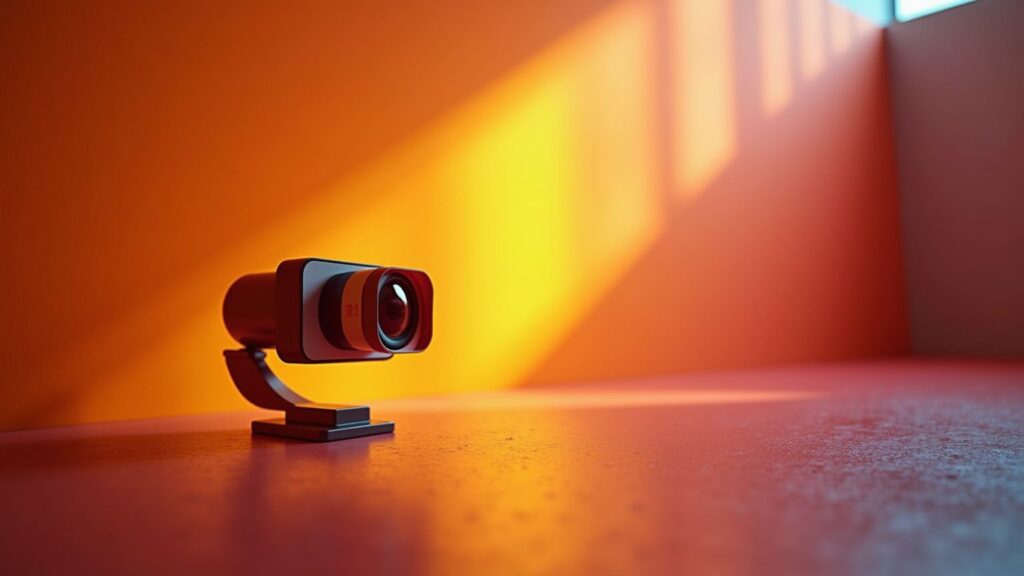Upgrade Your Game in 2025 with AI Sports Tracking Camera Technology
Imagine watching your favorite sports team and seeing every play captured with precision, every movement analyzed in real-time, and every…

Imagine watching your favorite sports team and seeing every play captured with precision, every movement analyzed in real-time, and every player’s performance broken down in meaningful ways.
This is the revolution AI sports tracking cameras bring to the table—and it’s not just for elite athletes anymore. Whether you’re a coach, athlete, or sports enthusiast, integrating artificial intelligence into sports has made advanced analytics and performance enhancement tools more accessible than ever.
This article provides an in-depth analysis of the transformative impact of AI-powered cameras on the experience and understanding of sports.
From explaining the fascinating mechanics behind AI cameras to exploring their benefits on the field, there’s a lot to unpack. We’ll also look at leading models, innovations in AI sports analytics, and practical tips on choosing the perfect AI camera for your needs.
Whether you’re looking to improve team performance, provide real-time feedback, or simply stay ahead in the game of sports tech, this guide will equip you with everything you need to know.
By the end, you’ll not only understand the science behind these remarkable tools but learn how to apply them to elevate your game day insights. Let’s get started!
Understanding AI Sports Tracking Cameras
How AI Cameras Work
AI sports tracking cameras are not just traditional cameras—they’re equipped with powerful artificial intelligence to track movement and actions automatically.
These cameras rely on advanced algorithms to recognize players, monitor their movements, and follow the game’s action without human intervention. Think of them as a hyper-focused photographer who never misses a moment, no matter how fast-paced the action gets.

The secret lies in computer vision technology. Essentially, the camera “sees” the game and interprets it in real-time.
It identifies patterns, shapes, and movements to understand who the players are and even predict where the action is headed next. This eliminates the need for manual panning, zooming, or tracking typically done by a camera operator, offering pinpoint accuracy with minimal effort from the user.
Some models go a step further by combining artificial intelligence with machine learning. Over time, these AI systems become smarter, adapting to different sports or individual playing styles. For example, they can distinguish between a basketball game and a soccer match or focus on a specific player based on pre-set preferences.
In short, AI sports tracking cameras merge high-tech innovation with ease of use, making them an invaluable tool for coaches, athletes, and even fans who want professional-level recording without spending hours behind the lens.
Benefits of Using AI in Sports
With AI sports cameras, the experience and analysis of sports is being transformed for players, coaches, and fans. Whether you’re part of a professional team or just looking to improve your weekend game, these cameras deliver valuable insights.
One major advantage is precision tracking.
AI-driven cameras utilize advanced algorithms to follow the movement of players and the ball automatically. This means you get accurate, detailed footage without needing a camera operator. It’s particularly helpful in training sessions, where you can focus on playing, not setting up equipment.
Another perk is in-depth data analysis. Many AI cameras use tools to analyze performance metrics such as speed, positioning, and effort levels. This type of analysis helps athletes and coaches identify weaknesses to refine strategies or improve skill sets.
For example, you could pinpoint whether your passing accuracy declines under pressure or if your defensive positioning needs improvement.
AI cameras also enhance the fan experience. Live-streaming options, automatic highlight reels, and slow-motion recaps make it easier than ever to share games with supporters, no matter where they are.
In short, whether you’re chasing performance goals or simply capturing memories, these smart devices elevate every aspect of your sporting journey. Why settle for less when technology can amplify your game so profoundly?
Popular Models and Brands
When diving into the world of AI sports tracking cameras, you’ll quickly discover that not all models and brands are created equal.

Some cater to professional teams looking for cutting-edge features, while others are tailored for schools, small leagues, or even at-home sports enthusiasts. To help you navigate the market, here’s an overview of some of the most popular names in the game.
Each brand has its unique strengths, so the best choice depends on your specific needs, budget, and the type of sports you’re tracking. Take time to explore their user reviews and features before making your decision.
Advancements in AI Sports Analytics
AI and Performance Metrics
AI is revolutionizing the way athletes, coaches, and teams measure performance. At its core, performance metrics refer to the data used to evaluate how athletes perform during training sessions or competition, and AI cameras are bringing unprecedented precision to this analysis. Gone are the days of relying solely on manual observations and stats sheets; AI now gathers and processes data automatically, with pinpoint accuracy.
Think about the sheer potential. An AI sports tracking camera can monitor player speed, endurance, heart rate, and more—all in real-time. Some advanced systems even use computer vision to track body movements and technique, creating detailed performance reports. For a soccer player, for instance, it can calculate sprint speed or analyze shooting angles. For a tennis player, it might detect nuances in swing mechanics or ball trajectory. This level of granularity allows athletes to identify strengths and weaknesses down to the smallest detail.
For coaches and trainers, AI-powered metrics are gold. They can use this data to implement targeted training programs, adjust game strategies, and reduce the risk of overtraining or injury. Plus, the ability to track progress over time ensures constant improvement. Whether you’re an athlete striving for perfection or a coach building a championship team, AI is your secret weapon for upping your game.
Real-Time Feedback and Analysis
Real-time feedback and analysis are transforming how athletes, coaches, and fans interact with sports. Thanks to AI sports tracking cameras, you no longer have to wait until halftime or the post-game review to identify areas for improvement. These cameras process live data and provide instant insights, enabling on-the-fly adjustments that can change the course of a game.
Imagine a soccer player receiving immediate feedback about their positioning or a tennis player being alerted to an angle misstep during a serve. AI cameras make this possible by using machine learning algorithms to track movement, recognize patterns, and identify inefficiencies—all in real-time. Whether you’re working on improving speed, accuracy, or coordination, this data-driven approach ensures you’re consistently learning and evolving your skills as you play.
For coaches, real-time analysis is a game-changer. Instead of relying solely on intuition, they can make data-backed decisions mid-game. For instance, an AI system might highlight when an opponent’s defense begins to weaken, suggesting possible adjustments to exploit that weakness.
Athletes at all levels can benefit from real-time insights. While professionals use this technology to gain a competitive edge, amateur athletes can use it to accelerate their skill development, making advanced sports science accessible to everyone. With real-time analysis, the future of sports is fast, smart, and adaptive.
Case Studies in Sports Technology
When it comes to real-world applications, few industries have embraced AI-driven innovation quite like the world of sports. Let’s dive into a few compelling case studies that showcase how AI sports tracking cameras and related technologies are transforming athletic performance, coaching, and fan experiences.
1. Soccer Coaching with Pixellot:
Pixellot, one of the leading AI sports camera brands, has revolutionized soccer training for teams across all levels. By offering automated game recording and analytics, the technology enables coaches to break down player movements, ball possessions, and tactical formations in detail. This level of granularity saves time on video analysis while providing actionable insights to improve team strategy. Coaches and athletes alike praise the system for making high-tech training accessible to amateur and youth leagues.
2. Basketball Player Tracking with HomeCourt:
The AI-powered app HomeCourt is another standout example. Using just a smartphone and advanced computer vision, the app tracks shooting mechanics, footwork, and court positioning in basketball. It’s been adopted by NBA players for personal training and by local leagues for in-game analytics. HomeCourt bridges the gap between professional-level tools and everyday athletes, putting remarkable data into the hands of ordinary players.
3. Tennis Analysis with Hawk-Eye Technology:
Known for perfecting line calls in tennis, Hawk-Eye has expanded into broader performance metrics. Using AI and machine learning, it tracks every ball’s spin, speed, and trajectory. Coaches and players use this data to refine performance strategies during matches, offering real-time feedback that leaves no room for ambiguity.
These examples highlight how AI isn’t just about cutting-edge innovation—it’s about accessibility, precision, and leveling the playing field for athletes everywhere.
Choosing the Right AI Sports Tracking Camera
Factors to Consider
Choosing the right AI sports tracking camera can feel overwhelming, especially with the variety of options on the market. But narrowing down your decision boils down to a few critical factors that align with your specific needs.
First, think about the sports you’ll be using it for. Different sports have different movement patterns and requirements. For example, cameras suited for basketball or soccer may need wider fields of vision and fast motion-tracking capabilities, while cameras for individual sports like tennis or golf might focus more on precision and detailed analytics. Make sure your chosen camera supports your sport’s unique dynamics.
Second, consider ease of use. Whether you’re a coach, athlete, or parent, the last thing you want is to struggle with complicated setup or confusing interfaces. Opt for cameras that are user-friendly and come with clear instructions or app support so you can spend more time focusing on performance.
Lastly, compatibility matters. Ensure the camera integrates with any existing software or devices you use. Some systems might require specific apps or cloud subscriptions for data, so factor that into your decision. Bonus points if the system offers upgrades or compatibility with other tools like fitness trackers!
Ultimately, the perfect camera balances functionality, simplicity, and versatility for your unique goals.
Cost vs. Features
When choosing an AI sports tracking camera, balancing cost and features is crucial. You want top-tier technology without breaking the bank, but finding this sweet spot requires some careful consideration.
Start by identifying your essential features. Do you need robust motion tracking, customizable analytics, or compatibility with specific sports? High-end models often come with impressive perks like 4K video resolution, advanced AI algorithms for player recognition, and cloud storage. However, if you don’t need all these bells and whistles, mid-range options might suit you perfectly—offering core functionalities like automatic panning and zooming at a fraction of the price.
Think about the long-term costs as well. Some cameras offer subscription-based services for accessing advanced features, like detailed analytics or live-stream broadcasting. Make sure to read the fine print on these costs before committing, as they can add up over time. On the other hand, upfront investments in higher-priced models might save you money down the road by reducing reliance on external add-ons.
To simplify decision-making, create a side-by-side comparison chart that lists features next to prices. This way, you can quickly spot models that align with your priorities and budget. Ultimately, weigh the value: Will the extra features truly improve your experience, or could a simpler model meet your needs?
User Experiences and Reviews
When it comes to AI sports tracking cameras, hearing from real users can make all the difference. Reviews and user experiences often reveal insights that you won’t find in product specs or marketing brochures. They can help you understand how well a camera truly performs in everyday use.
One of the most common things users appreciate about AI sports tracking cameras is their ease of use. Many models come with intuitive interfaces and quick setup times, making them accessible even if you’re not tech-savvy. Parents recording youth games, for example, often rave about how these cameras “just work” without constant adjustments.
However, not all feedback is glowing. Some users point out challenges like occasional tracking glitches when there are multiple players on the field or rapid, unpredictable movements. Reading reviews can help you gauge how often these issues occur and if they’re deal-breakers for your specific needs.
To get a well-rounded perspective, start by checking reviews on platforms like Amazon, Best Buy, or dedicated sports tech forums. Pay attention to recurring themes, both positive and negative. Better yet, if you can, watch video clips recorded on these cameras to judge the footage quality yourself.
Ultimately, user reviews are a goldmine of practical advice—and they’ll help you make a more informed decision.
Conclusion
As you’ve seen throughout this article, AI sports tracking cameras are revolutionizing how we experience and analyze sports. Whether you’re a coach searching for the next edge in team performance, an athlete eager for actionable feedback, or a parent preserving highlight-worthy moments, this technology has something to offer everyone. The combination of advanced tracking, analytics, and real-time insights is transforming sports into a more data-driven and efficient arena.
The key takeaway? Understanding your specific needs is crucial when deciding on an AI sports tracking camera. Take the time to assess factors like the features you can’t live without, the cost you’re comfortable with, and feedback from real users who’ve tried these devices. These considerations will point you toward the best product for your unique situation.
The future of AI in sports continues to look promising. As innovation progresses, we can expect these cameras to become even more intuitive and widely accessible. Whether for professional players or weekend enthusiasts, the partnership between artificial intelligence and sports technology is only just beginning to flourish.
Are you ready to up your game and embrace this cutting-edge innovation? The decision is yours—because the sports world is advancing, and it’s waiting for you to join in.
